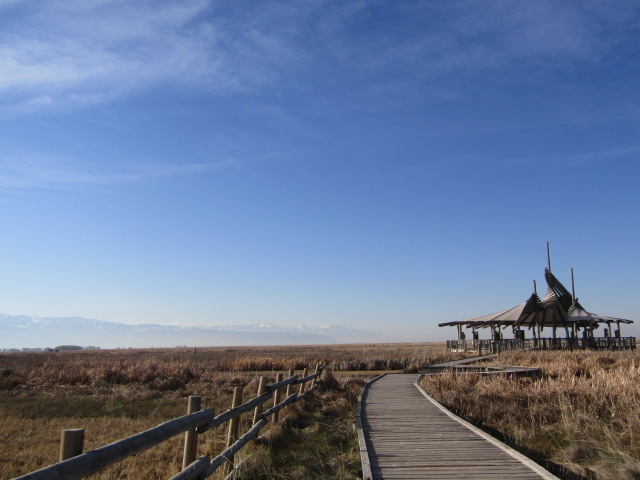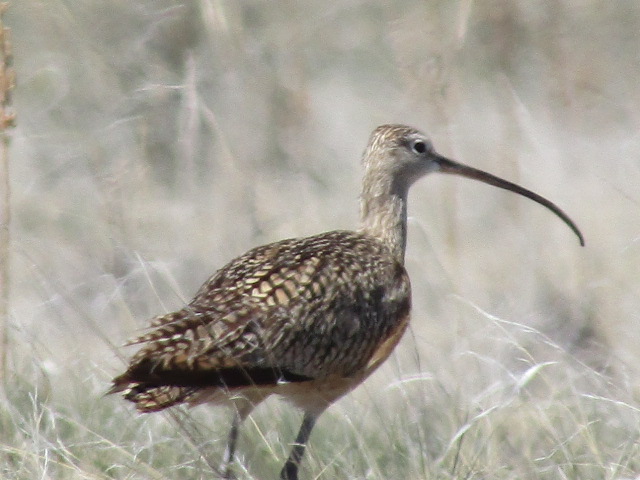by Bonnie Wood
Heading north towards home from southeastern Arizona on a COVID-year birding road trip in May 2021, we spent a few days in Utah exploring three Great Salt Lake birdy sites.
Many would argue that the entire state of Utah should be one big national park. (Alas, Utahans definitely do not agree.) Yet from its magnificent national parks like Bryce, Zion, and Arches and the Escalante Wilderness in Utah’s south to the alpine slopes of the farther north Wasatch and Uinta Mountains and their sweeping valleys in between, few states can boast such stunning landscapes and habitats in such a relatively small area.
I had never explored the Great Salt Lake region, however. I had only driven through on the interstate, never seeing the lake proper. Before our trip we googled three promising preserves to explore and bird, all a bit north of Salt Lake City and accessible from the city of Layton: The Great Shorelands Preserve, owned by The Nature Conservancy; Farmington Bay Waterfowl Management Area; Antelope Island State Park. These preserves help protect lakeshore habitat used by millions of migrating shorebirds. Millions. All of these preserves have level boardwalk or dirt paths; all have handicap-accessible areas.
At The Great Shorelands Preserve, which has a mile-long boardwalk over marsh and two viewing platforms, excellent display boards taught me much about the Great Salt Lake’s ecosystem. In The Nature Conservancy’s words, the lake “breathes.” A basin between mountain ranges, the Great Salt Lake has no outflow save evaporation. Its water levels rise and fall based on mountain snowpack and yearly rainfall. In the 1980s, water levels were so high that buildings on the lake’s shore were flooded. Now, in the 2020s, lake water is down, and the shore is ringed by large swaths of salt flats and shallows.
Which is great for shorebirds. The Great Salt Lake is too salty for anything to survive in its water except brine shrimp, and their copious blooms in the shallows feed the millions of shorebirds who stop to feed on their migrations north. Some decide to stay and nest in the marshes – some hundreds of thousands of Avocet, White-Faced Ibis, Wilson’s Phalarope, and Snowy Plover, among others.
After a little stoat carrying a lizard in its mouth skittered across the planks past our feet at The Great Shorelands Preserve, we saw Sandhill Cranes, Ring-Necked Pheasant, Long-Billed Curlew, Eared Grebe, Forster’s Tern, Mallard, and Kestrel. Singing Western Meadowlarks were ubitquitous in the grasses, as were diverse sparrows and swallows. White-Faced Ibis groups flew by overhead. Canada Geese were plentiful, as they were in all the preserves we visited.
That afternoon, at the Farmington Bay Waterfowl Management Area, Western Grebes floated idly beneath a very successful Great Blue Heron rookery construction. White Pelicans, Forster’s Tern, Franklin’s Gull, Green Heron, American Coots, Avocet, White-Faced Ibis, and Eared Grebes rested on mud banks. Grass-loving songbirds, swallows, warblers and more abounded along the many paths and ponds this preserve boasts. Paths in fact meander far out into the marshes; we saw huge flocks of American Wigeon, Green-Winged Teal, and other ducks in the distance. Several fabulous white-morph Northern Harriers hunted here. One could walk for miles at this preserve, though on this warm afternoon, the wind came up, and birds hunkered down.
Finally, Antelope Island is a must-see. A state park, one reaches it by a causeway from Layton. The causeway’s length merits stops along the way. I thought I saw “sticks” far out in the water, for example, but when we stopped and I looked through my binoculars, I saw that they were hundreds and hundreds (thousands?) of Avocet feeding in the shallow water, spread out over a good half-mile. Close to the shore we saw Wilson’s Phalarope and Solitary Sandpiper.
Anderson Island has a touring road with hikes of varying distance from the road. A couple of the shortest walks lead to superb viewpoints out over Great Salt Lake to the mountains in the west, blued and blurred by distance. To the east, one sees Salt Lake City’s skyline, with its growing population’s exurbs and suburbs spreading north and south along the lakeshore. Above the city, the Wasatch Mountains rise. From the road or hiking trails one sees the island’s resident bison, as well as Long-Billed Curlew and other meadow-loving birds.
While I highly recommend a trip to Antelope Island for its birds and hiking, one must be braced for biting insects, at least on a warm May day. Bring and use the strongest Deet you have and wear a mosquito hat to protect yourself against…biting gnats. Seriously biting gnats! Without mosquito hats, with only Cutter’s insect repellent, we raced for high ridges with strong breezes and still returned home looking like we had chicken pox along our hat-rim lines, behind our ears, and on our necks. Eek! Strangely, the gnats were not that interested in our bare arms and legs; we only suffered a couple of bites there. Am guessing these particular biting gnats swarm to carbon dioxide exhalations. Despite the gnats, we loved our hike and saw lots of well-fed Violet-Green Swallows, Red-Tail Hawks, Song Sparrows, Common Ravens, and one singing Rock Wren. The views were stunning. A last lucky sighting was a porcupine curled up, napping, in tree branches, off the road as we left the island. Yes to Antelope Island, even with bugs!
Photos by Bonnie Wood










